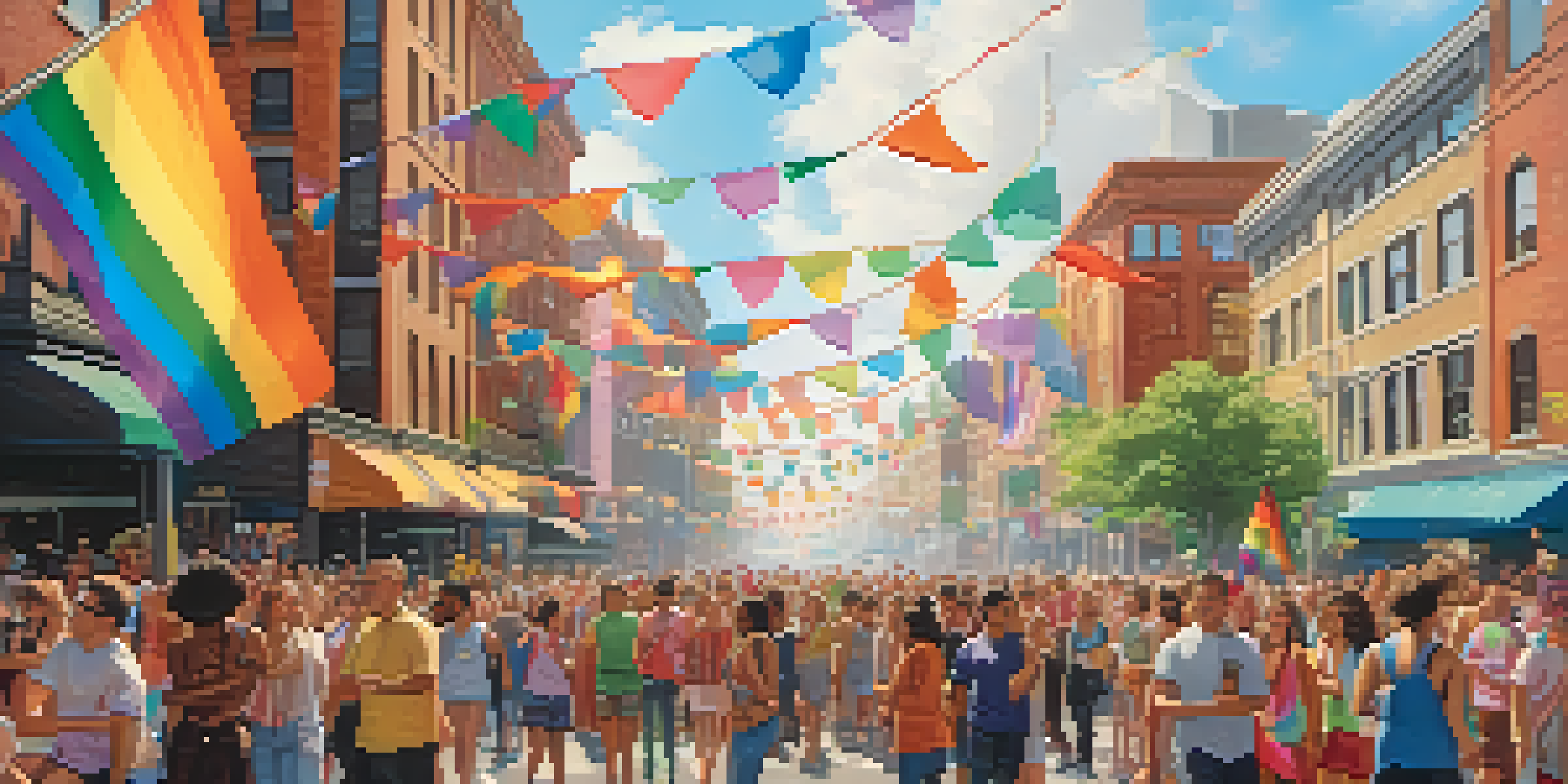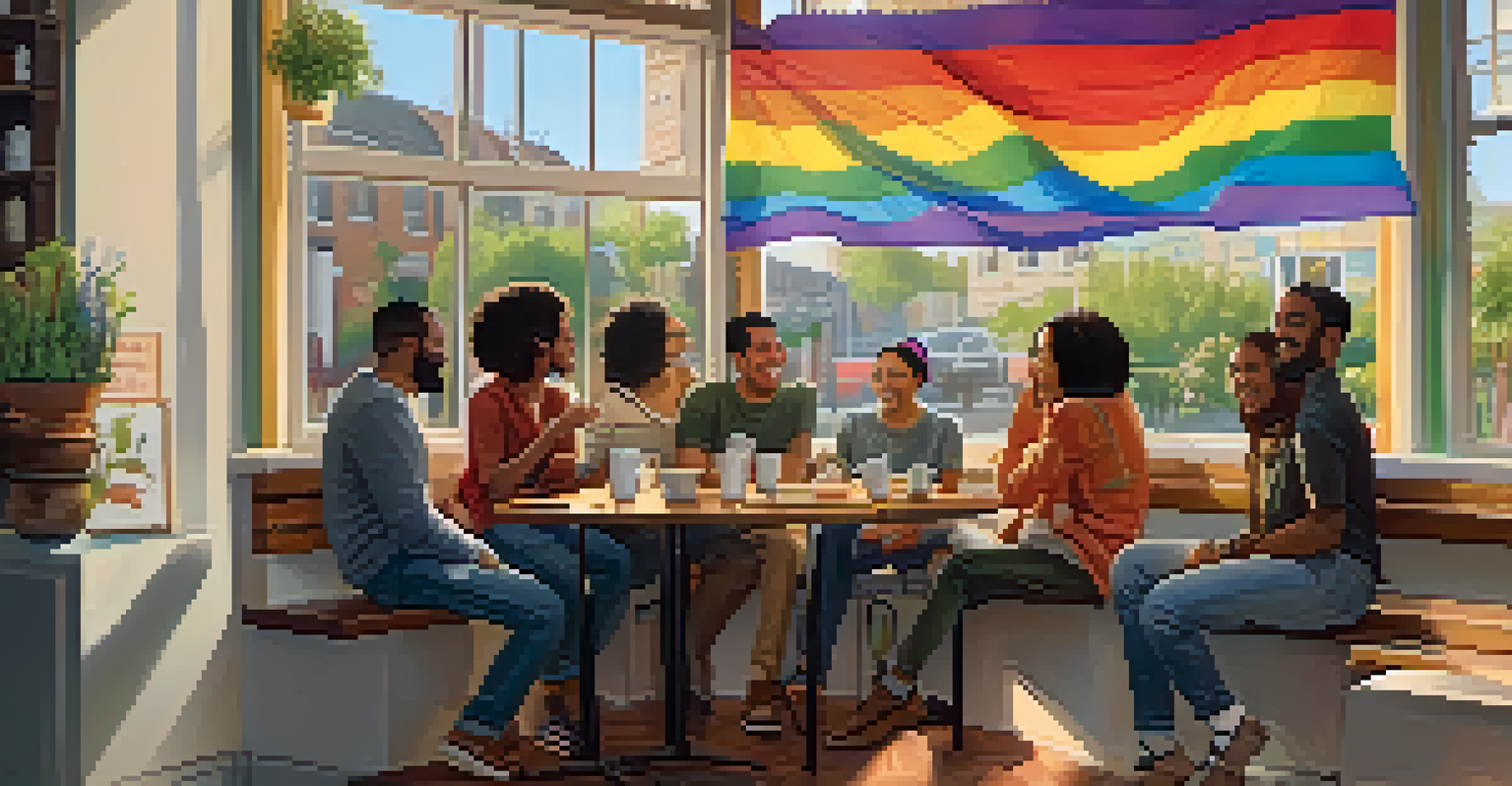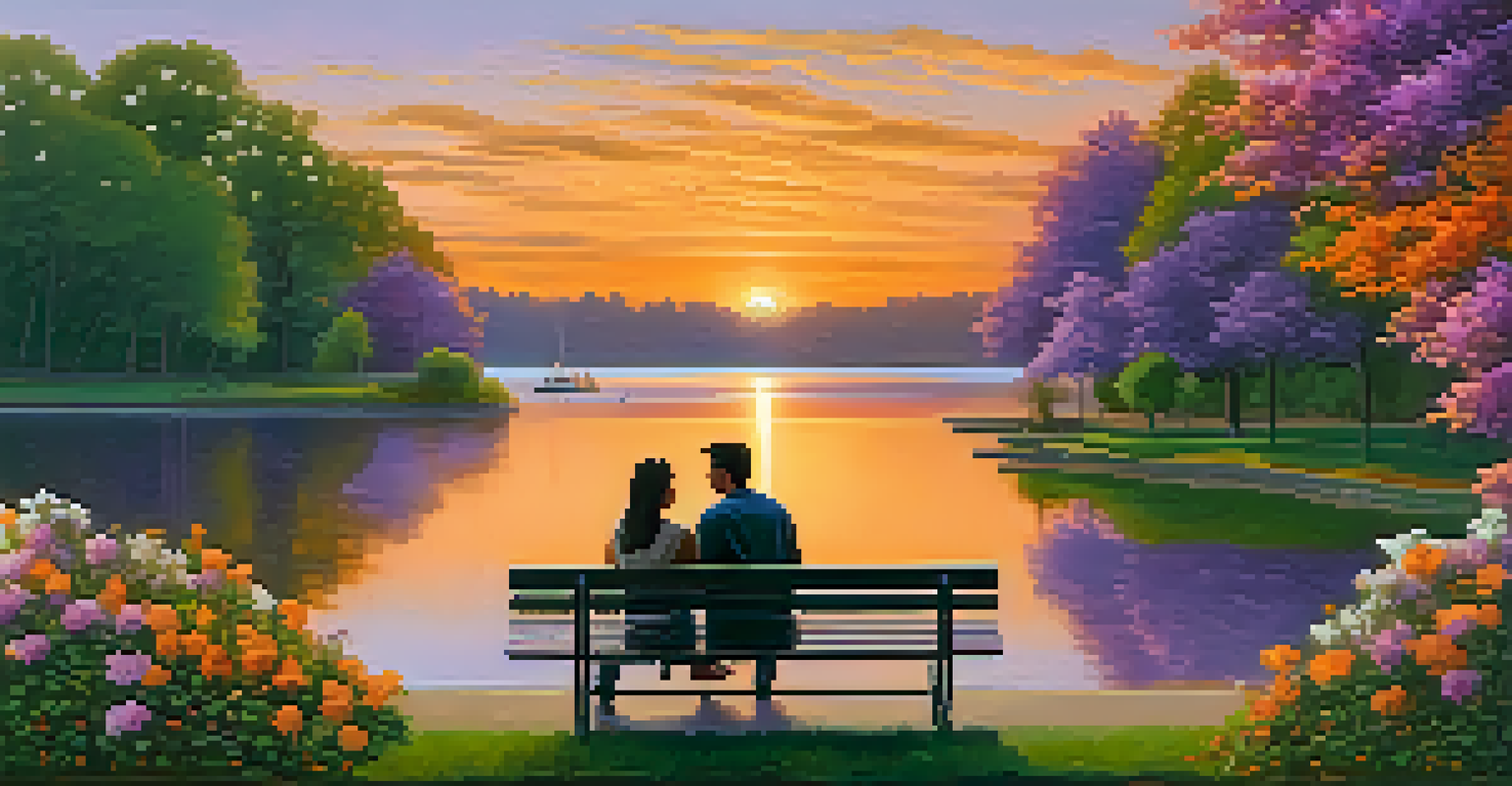The Evolution of LGBTQ+ Characters in Hollywood Films

Early Depictions: Stereotypes and Censorship
In the early days of Hollywood, LGBTQ+ characters were often portrayed through a lens of stereotypes and censorship. Films typically used coded language or subtle hints to suggest a character's sexuality, as outright representation was largely taboo. This meant that LGBTQ+ individuals were often depicted as villains, tragic figures, or mere caricatures, reinforcing harmful stereotypes.
Representation matters. It’s about fostering understanding and empathy through the stories we tell.
One notable example from this era is the film 'The Children's Hour' (1961), which tackled the theme of a lesbian relationship but ultimately fell victim to the era's censorship. The film's tragic ending highlighted the dangers of being openly LGBTQ+ at the time, reflecting society's fears rather than celebrating diversity. Such portrayals contributed to a culture of misunderstanding and fear surrounding LGBTQ+ identities.
Despite these challenges, early LGBTQ+ characters laid the groundwork for future representations. They sparked conversations about sexuality and identity, opening doors for more nuanced portrayals in the years to come. As society began to shift, so too did the ways in which filmmakers approached LGBTQ+ stories.
The 70s and 80s: A Shift Towards Visibility
The 1970s and 80s marked a significant turning point for LGBTQ+ representation in Hollywood. With the rise of the gay rights movement, filmmakers began to challenge previous stereotypes and create more complex characters. This era saw the release of films like 'The Boys in the Band' (1970), which showcased gay friendships and struggles in a more authentic light.

However, this period was not without its challenges. The AIDS crisis brought new fears and stigmas, often leading to tragic portrayals of LGBTQ+ characters. Films like 'Philadelphia' (1993) emerged, highlighting the real-life struggles of those affected by the crisis, but they also tended to center the narrative around heterosexual perspectives, sometimes sidelining the voices of the LGBTQ+ community.
Evolving LGBTQ+ Representation
Hollywood has transformed from portraying LGBTQ+ characters through harmful stereotypes to increasingly complex and authentic narratives.
Yet, despite these hurdles, the 70s and 80s laid a crucial foundation for visibility. Filmmakers began to acknowledge the diversity within the LGBTQ+ community, allowing for a broader range of stories and characters to emerge. This shift set the stage for even more meaningful representation in the years that followed.
The 90s: Embracing Complexity and Diversity
The 1990s ushered in a wave of more nuanced LGBTQ+ characters, reflecting a growing acceptance in society. Films like 'To Wong Foo, Thanks for Everything! Julie Newmar' (1995) and 'The Birdcage' (1996) showcased LGBTQ+ characters as vibrant individuals with rich lives, rather than just stereotypes. These films embraced humor and heart, allowing audiences to connect with the characters on a deeper level.
The history of LGBTQ+ representation in film is a journey through silence, repression, and ultimately, the celebration of diversity.
Additionally, the 90s saw an increase in LGBTQ+ representation in mainstream television, which helped normalize these characters in the eyes of the public. Shows like 'Will & Grace' introduced gay characters to a wider audience, creating a cultural shift that encouraged acceptance and understanding. This growing visibility was a significant victory for the LGBTQ+ community.
However, it’s essential to recognize that not all portrayals were positive. Some films still leaned into clichés or focused on tragedy, but the overall trend was towards more authentic storytelling. This decade marked a crucial step in the evolution of LGBTQ+ representation, laying the groundwork for the more diverse narratives that would follow.
The 2000s: Breaking Barriers and Expanding Narratives
As we moved into the 2000s, the landscape of LGBTQ+ representation in Hollywood began to break new ground. Films like 'Brokeback Mountain' (2005) brought gay love stories to the forefront, earning critical acclaim and commercial success. This film challenged traditional narratives by exploring the complexities of same-sex relationships, demonstrating that LGBTQ+ stories could resonate with a mainstream audience.
This era also saw the emergence of more diverse LGBTQ+ characters, including those from different racial and cultural backgrounds. Films such as 'Pariah' (2011) highlighted the intersectionality of identity, showing that there are myriad experiences within the LGBTQ+ community. This shift was crucial in fostering a deeper understanding of the diversity that exists within sexual and gender identities.
Evolving LGBTQ+ Representation
LGBTQ+ characters have transitioned from harmful stereotypes in early Hollywood to more authentic and diverse portrayals over the decades.
Moreover, the 2000s introduced LGBTQ+ characters in various genres, from romance to comedy to action. This expansion of narratives proved that LGBTQ+ stories could fit into any cinematic mold, further normalizing their presence in Hollywood. As filmmakers continued to explore these themes, the representation of LGBTQ+ characters became more authentic and multifaceted.
The 2010s: A New Era of Acceptance and Representation
The 2010s marked a remarkable era for LGBTQ+ representation in Hollywood, characterized by increased acceptance and visibility. Major studios began producing films that featured LGBTQ+ stories as central narratives rather than side plots. Movies like 'Moonlight' (2016), which won the Academy Award for Best Picture, celebrated the complexity of Black queer identity, showcasing a depth rarely seen before.
Television also played a significant role during this decade, with shows like 'Orange Is the New Black' and 'Pose' giving voice to LGBTQ+ characters and stories. These series highlighted the richness of LGBTQ+ experiences and fostered conversations about race, gender identity, and sexuality, creating a cultural phenomenon that resonated with audiences worldwide.
Despite the progress, challenges remained, particularly regarding representation of transgender and non-binary characters. While films like 'The Danish Girl' (2015) attempted to address transgender issues, they often faced criticism for casting cisgender actors in these roles. This highlighted the ongoing need for authentic representation and the importance of amplifying LGBTQ+ voices in storytelling.
Contemporary Trends: Authenticity and Intersectionality
In recent years, the conversation around LGBTQ+ representation has evolved to prioritize authenticity and intersectionality in storytelling. Filmmakers are increasingly recognizing the importance of telling diverse stories that reflect the rich tapestry of the LGBTQ+ community. This includes exploring various identities, cultures, and experiences, allowing for a more comprehensive representation of what it means to be LGBTQ+ today.
Films like 'Love, Simon' (2018) and 'Portrait of a Lady on Fire' (2019) have showcased LGBTQ+ love stories with authenticity and depth, appealing to audiences of all backgrounds. These films demonstrate that LGBTQ+ narratives can resonate universally, promoting empathy and understanding. Such stories challenge stereotypes and inspire future generations to embrace their identities.
Impact of Social Movements
The rise of the gay rights movement in the 70s and 80s significantly contributed to the visibility and complexity of LGBTQ+ stories in film.
Moreover, streaming platforms have become vital in showcasing LGBTQ+ content, allowing for more diverse stories to reach wider audiences. With increased accessibility, independent filmmakers are gaining opportunities to share their unique perspectives, further enriching the landscape of LGBTQ+ representation in film and television. This ongoing evolution reflects a broader cultural shift towards acceptance and understanding.
Looking Ahead: The Future of LGBTQ+ Representation
As we look to the future, the evolution of LGBTQ+ characters in Hollywood films continues to be a crucial conversation. While significant strides have been made, there is still work to be done in terms of representation and authenticity. The industry must commit to amplifying LGBTQ+ voices and stories, ensuring that diverse identities are represented both on-screen and behind the camera.
Future filmmakers have the opportunity to build on the foundation laid by those before them, creating narratives that reflect the realities of LGBTQ+ lives. This includes exploring intersections with race, disability, and other identities, allowing for richer storytelling that resonates with a broader audience. The demand for authentic representation is stronger than ever, pushing for change in the industry.

Ultimately, the evolution of LGBTQ+ characters in Hollywood films is an ongoing journey. By embracing diversity and authenticity, filmmakers can create narratives that not only entertain but also educate and inspire. As representation continues to improve, we can hope for a future where LGBTQ+ stories are not just accepted but celebrated in all their complexity.